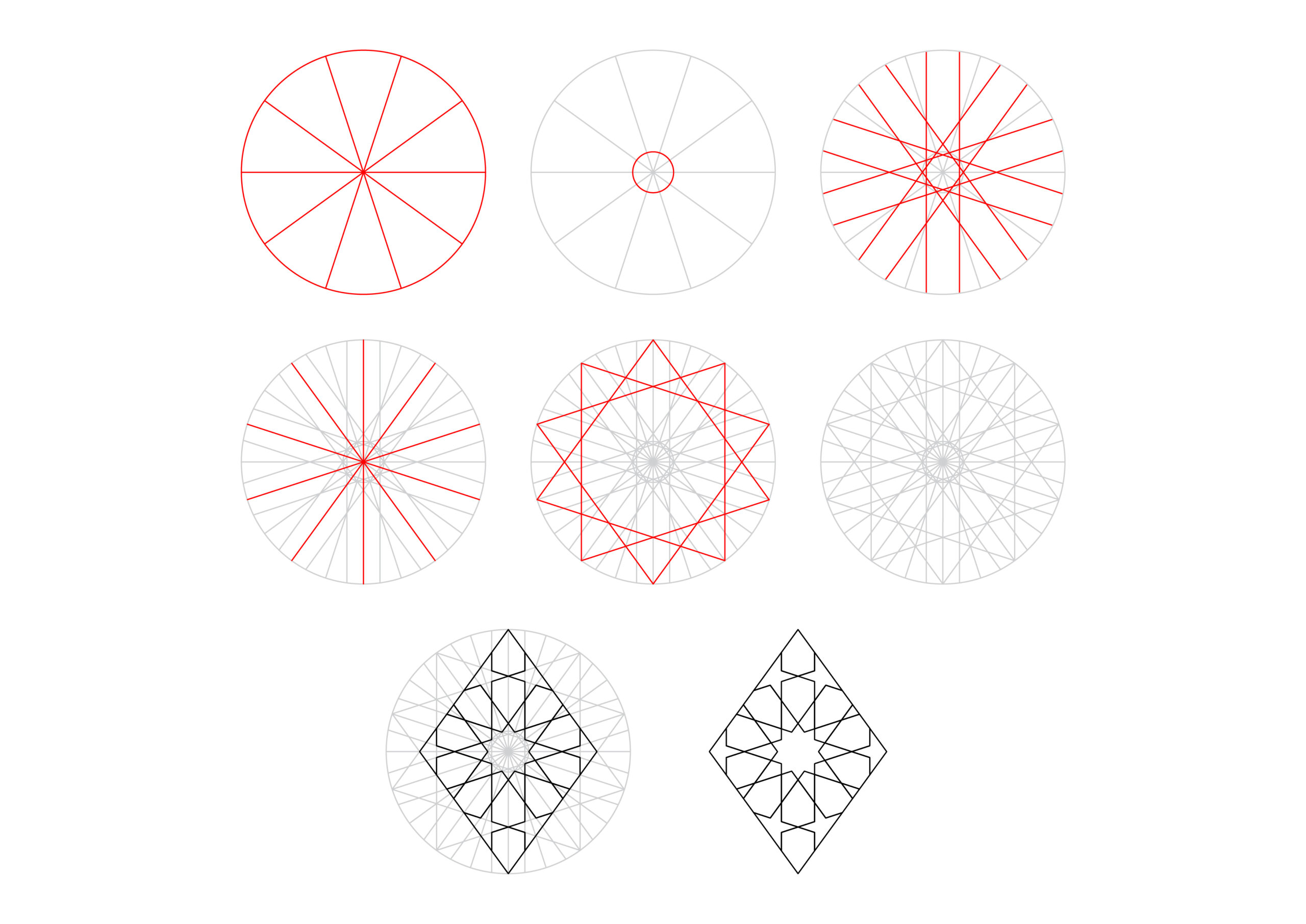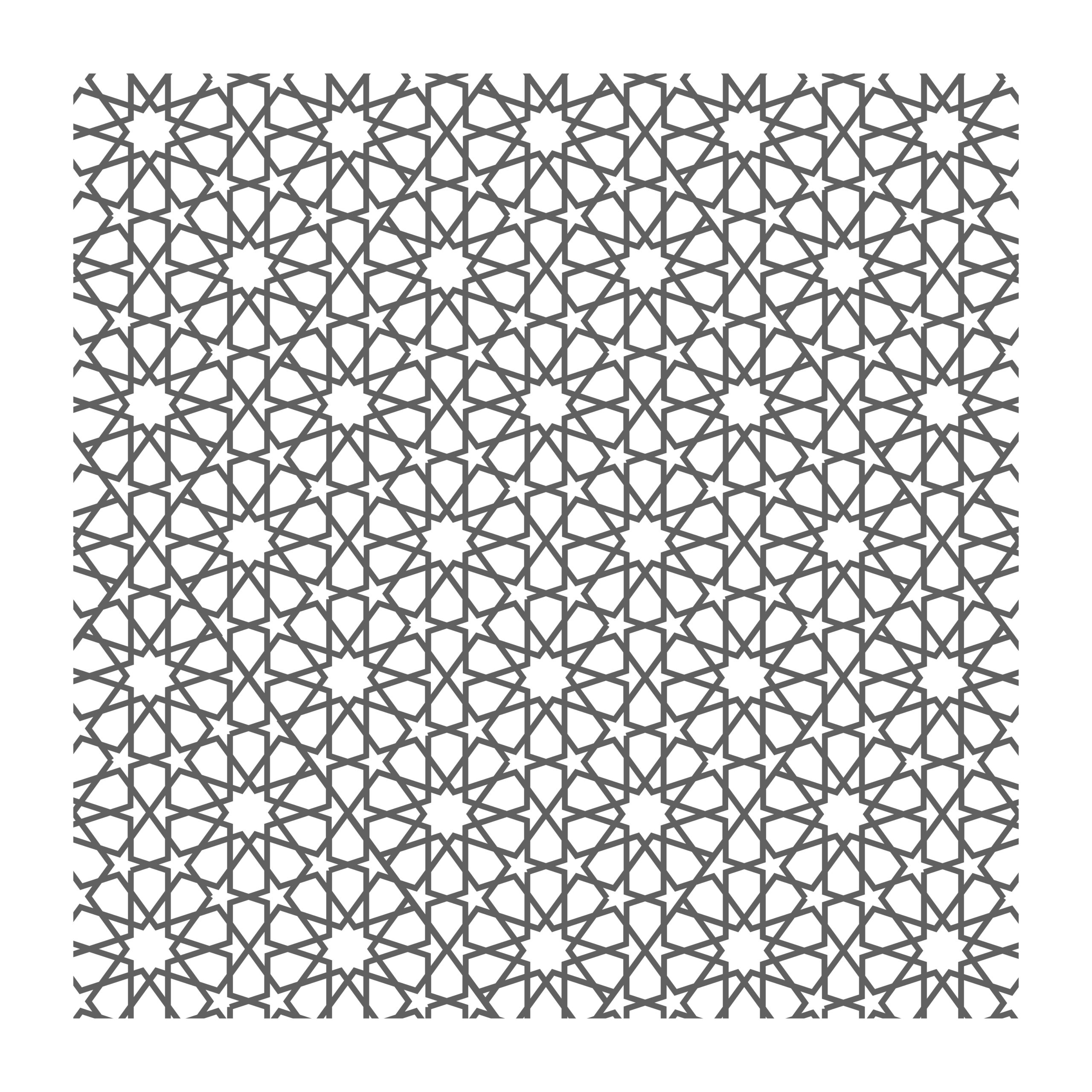ISLAMIC GEOMETRIC PATTERNS – PATTERN FORMATION
“Geometry is really a universal language, everyone can – and does – relate to it instinctively,” he said. “There is a joy to be had in starting with a blank piece of paper and to draw lines and circles and end up with a pattern that is recognizable and beautiful. This process connects you very directly to a design heritage.”
Eric Broug
Islamic designs are typically built from an array of circles and squares, replicated, overlapped and interweaved, forming highly detailed, complex patterns. Despite these patterns often appearing different, with alterations varying in form and colouring, there are recurring motifs throughout.
The star, a regular geometric shape, and a motif central to many Islamic decorations, is significant for its symbolism. In Islamic iconography, the star illustrates equal radiation in all directions, arising from a central point. Within the Quran, the only visualization of Allah was a reference to light. It was said that “God is the light of the heavens and earth”. Thus it was only natural for stars, located in the ‘heavens’, and producing light that could be seen from earth, to attain such symbolic authority. These stars not only feature in Islamic patterns which decorate sacred structures, but also illuminate the pages of sacred texts.
In patterns, all stars, whether they are 6, 8, 10, 12, or 16 pointed, are formed from a circle, proportionally divided into equal parts. The centre of the star is also the centre of the circle, the base of its creation – where each vertex of the star meets the circle at its circumference. This circle, like the star, plays a meaningful symbolic role, with multiple religious connotations. Circles are one of the oldest geometric symbols, and throughout history have come to be used to represent unity, perfection and infinity, to name a few. Without a beginning or an end, the circle emphasises the one true god – Allah – who is infinite. Taking this a step further, the rays of the star are drawn outward, – formed from the circle – and are symbolic of the spread of Islam.
At the beginning of Islam – commonly dated by scholars to the 7th century – the first Muslims inhabited the deserts of modern-day Saudi Arabia. There they lived, and relied upon the aid of stars when navigating both desert and sea. Stars were also vital for Muslims in the act of prayer – the second pillar of Islam – better known as Salah. They were used to find the direction of al-Qiblah, from within the constellation they called al-Rakabah (using what is otherwise referred to as the north star and the little dipper), in order to distinguish the correct orientation for prayer. As a result of this practice within Islam, which had great significance in the lives of early Muslims, it is therefore no surprise that the motif became so central within the Islamic aesthetic – not to mention its geometric ties.
These shapes, together, with other forms of polygons, form complicated patterns with multiple symmetries, reflections and rotations. Such patterns are perceived as mathematical tessellations, which have the innate capacity to extend endlessly, and are thus capable of conveying infinity. Geometry has long been affiliated to the metaphysical, and was introduced to the world long before the establishment of Islam. By definition, geometry is a branch of mathematics, that focuses on exploring the affinity between shapes and space. Historically, this first became evident in the period between 2,000BCE and 1,000BCE, when the Egyptian and Mesopotamian civilisations existed. The Greeks, who the Muslims studied, also displayed mathematical acuity. They too came to associate the perfection of geometry with divinity.
STAR PATTERN FORMATION

STAR PATTERN OUTLINED

STAR PATTERN COLOURED
